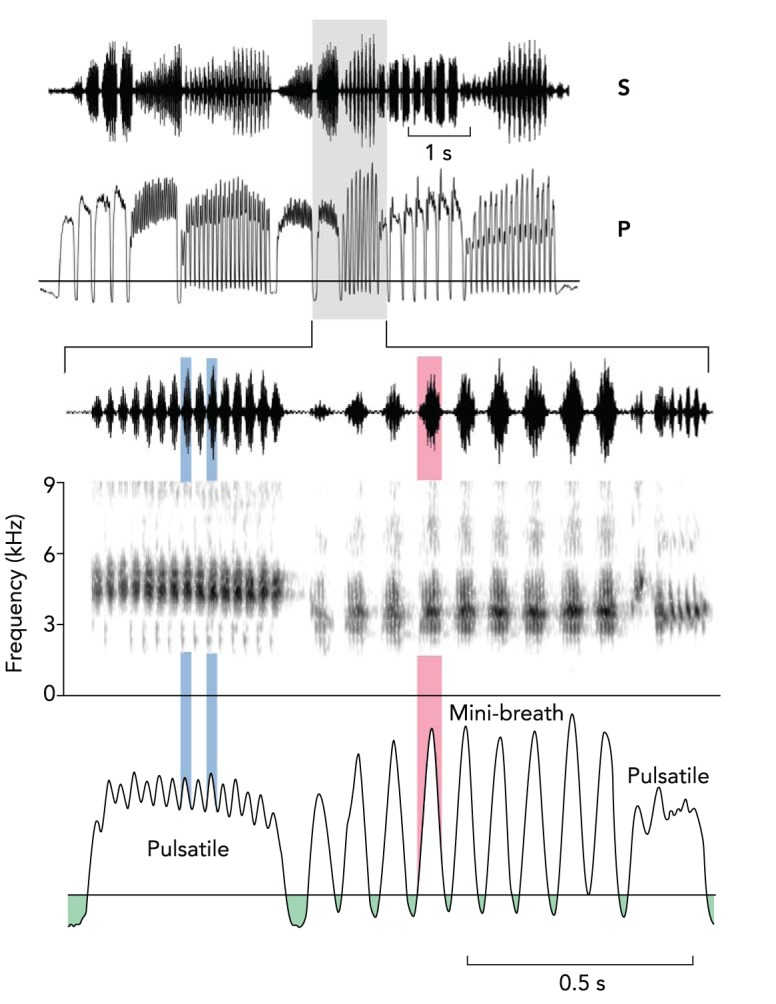FIGURE 1.

Song of the Brewer's sparrow (Spizella breweri) illustrates different respiratory mechanisms of trill production
Data represent simultaneously recorded subsyringeal air sac pressure (P) and sound (S). Air sac pressure patterns of a longer segment of song (top) indicate that respiratory activity is characteristic of the different syllable types and drives the observed changes in song rhythm. Two trill types of this song are shown in more detail below with spectrographic representation (gray area). A very high trill rate emerges from a pulsatile respiratory pattern (left), where air sac pressure is still modulated during the sustained expiration. Sound pulses generated during the maxima and minima coincide with silent periods in the trill. A second trill type is produced with mini-breaths (right). Mini-breaths ensure that air supply is replenished during silent inter-syllable intervals, but at the cost of trill rates that are lower than those generated with pulsatile respiration. Figure is modified from Ref. 28a with permission from Bentham Science Publishers.
